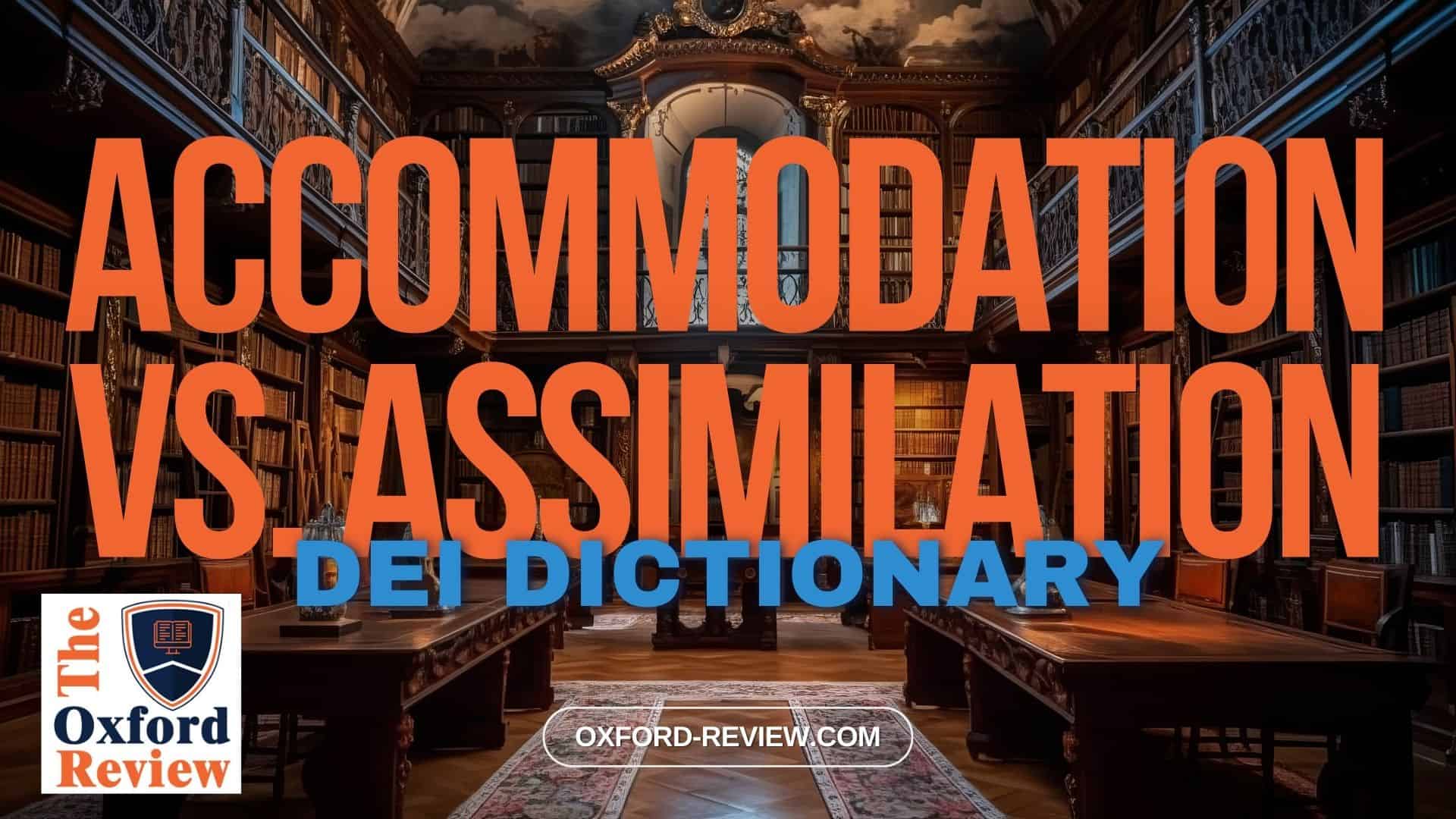Accommodation vs. Assimilation – Definition and Explanation

Understanding Accommodation vs. Assimilation in DEI: Key Differences Explained
In the realm of Diversity, Equity, and Inclusion (DEI), two fundamental concepts often discussed are accommodation and assimilation. While both pertain to incorporating individuals from diverse backgrounds into a larger group or society, they differ significantly in approach and outcome.
What is Accommodation?
Accommodation, in the context of DEI, refers to the adaptation of systems, practices, and structures to accommodate the needs and preferences of diverse individuals or groups. It emphasises embracing differences and fostering an inclusive environment where everyone feels valued and respected for who they are. Accommodation recognises that diversity enriches communities and organisations, leading to innovation, creativity, and enhanced problem-solving capabilities.
What is Assimilation?
Assimilation, on the other hand, entails the process through which individuals or groups adopt the cultural norms, values, and behaviours of the dominant group within a society or organisation. It often involves pressure to conform to the prevailing standards, potentially erasing or marginalising unique identities and perspectives in favour of homogeneity. While assimilation may promote unity and cohesion, it can also perpetuate inequalities and hinder genuine diversity by suppressing authentic expressions of identity.
Key Differences:
- Approach: Accommodation emphasises acceptance and adaptation to diversity, while assimilation leans towards conformity to existing norms.
- Outcome: Accommodation fosters inclusion and celebrates differences, whereas assimilation may lead to the loss of cultural richness and individuality.
- Impact: Accommodation promotes equity by accommodating diverse needs, while assimilation may reinforce power imbalances and marginalise minority groups.
Example:
Consider a workplace striving to promote DEI initiatives. Through accommodation, the company implements flexible work hours to accommodate employees from various cultural backgrounds who observe different religious holidays. This approach acknowledges and respects employees’ diverse religious practices, fostering a more inclusive work environment.
Conversely, if the company adopts an assimilationist approach, it might expect all employees to adhere strictly to a singular corporate culture, disregarding individual differences. In this scenario, employees who are unable to conform to the dominant culture may feel excluded or marginalised, leading to decreased morale and productivity.
Conclusion:
In the pursuit of Diversity, Equity, and Inclusion, understanding the distinctions between accommodation and assimilation is crucial. While accommodation promotes acceptance and celebrates diversity, assimilation risks erasing unique identities in favour of conformity. By embracing accommodation and creating environments where diverse perspectives are valued and respected, organisations and societies can foster genuine inclusivity and equity.
References:
Hanfstingl, B., Arzenšek, A., Apschner, J., & Gölly, K. I. (2021). Assimilation and accommodation. European Psychologist. https://econtent.hogrefe.com/doi/full/10.1027/1016-9040/a000463
Payne, A. J., Joseph, S., & Tudway, J. (2007). Assimilation and accommodation processes following traumatic experiences. Journal of Loss and Trauma, 12(1), 75-91. https://www.tandfonline.com/doi/abs/10.1080/15325020600788206
Gordon, J. A. (1994). Assimilation or Accommodation. https://eric.ed.gov/?id=ED383649
Be impressively well informed

Get the very latest research intelligence briefings, video research briefings, infographics and more sent direct to you as they are published
Be the most impressively well-informed and up-to-date person around...
